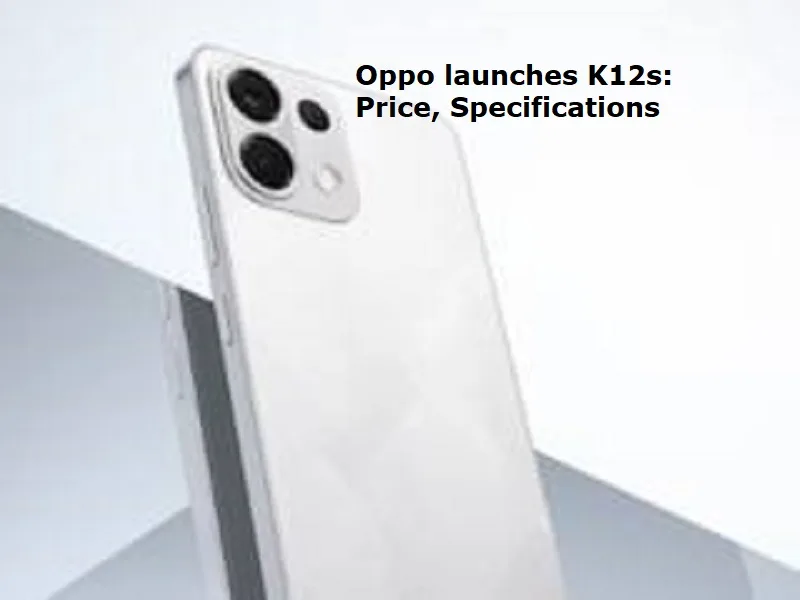
Mumbai: Oppo K12s was launched in China. The Oppo K12s appears to be a rebranded version of the Oppo K13 5G, which was announced on Monday in the Indian market.
Price of Oppo K12s is set at CNY 1,199 (roughly Rs. 14,000) for the base 8GB + 128GB storage model. The 8GB + 256GB, 12GB + 256GB, and 12GB + 512GB RAM and storage versions are priced at CNY 1,399 (roughly Rs. 16,000), CNY 1,599 (roughly Rs. 18,000), and CNY 1,799 (roughly Rs. 20,000), respectively. It is available in Rose Purple, Prism Black and Star White (translated from Chinese) shades.
The dual-SIM (nano) Oppo K12s runs on Android 15 with the company’s ColorOS 15 skin on top. It sports a 6.67-inch full-HD+ (1,080×2,400 pixels) AMOLED display with up to 120Hz refresh rate, up to 180Hz touch sampling rate and 1,200 nits peak brightness. It runs on an octa-core Snapdragon 6 Gen 4 SoC with up to 12GB of LPDDR4X RAM and up to 512GB of UFS 3.1 storage. The handset has 5,700mm sq VC for heat dissipation.
Oppo K12s has a dual rear camera unit, comprising a 50-megapixel primary sensor with f/1.8 aperture and autofocus and a 2-megapixel monochrome camera. On the front, it sports a 16-megapixel sensor with an f/2.5 aperture. The phone has an IP65-rated build for dust and splash resistance.
Also Read: International carriers avoid Pakistani airspace
Connectivity options on the Oppo K12s include 5G, NFC, Wi-Fi 6, Bluetooth 5.2, Beidou, GPS, GLONASS, Galileo, QZSS and USB Type-C port. It has dual stereo speakers and an in-display fingerprint sensor for authentication. The handset supports facial recognition. Sensors onboard include ambient light sensor, accelerometer, gyroscope, infrared remote control and proximity sensor.
The Oppo K12s carries a 7,000mAh battery with 80W charging support. The fast-charging feature is said to fill the battery from zero to 62 percent in 30 minutes. The battery is advertised to provide up to 49.4 hours of calling time and a maximum of 14.9 hours of video calling time on a single charge. The battery is claimed to have a capacity retention rate of more than 80 percent after five years of normal use.

Post Your Comments